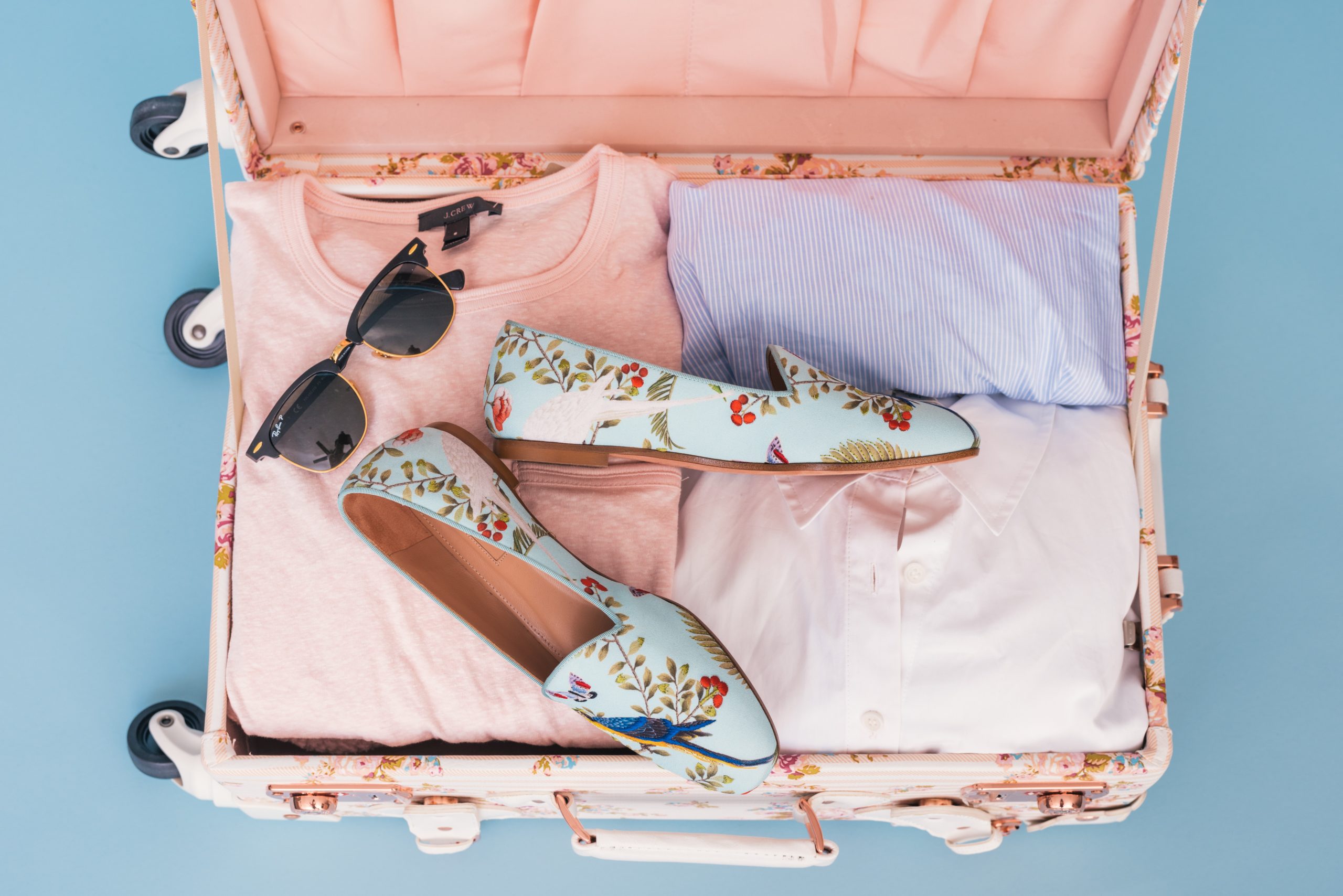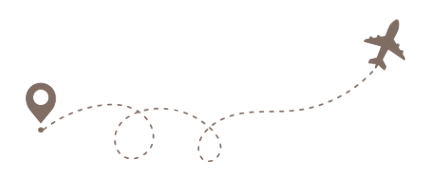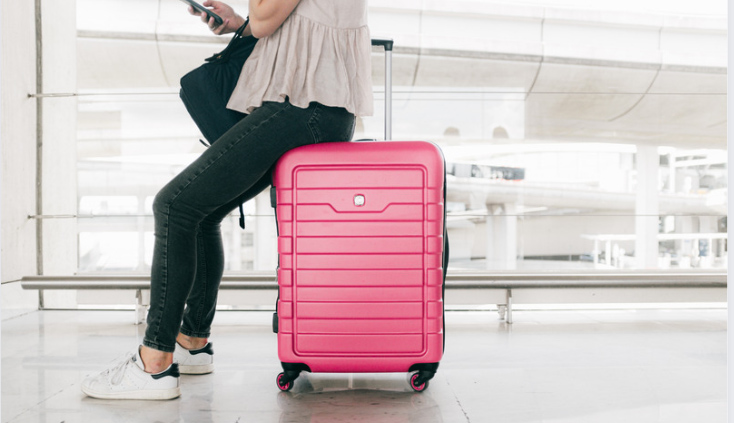Despite the ongoing rage of Omicron and other infectious COVID-19 variants, flights are fully-booked and the air travel industry is once again flourishing. However, new regulations have been set in place to protect the health of passengers and staff alike. Going into your travels knowing what to expect will help you save time, reduce stress and safeguard your health.
Let’s Talk COVID-19:
I recently traveled from the continental United States to the Hawaiian Islands, and this trip displayed just about every new regulation in air travel due to the pandemic. Let’s break it down.
Prior to arriving at the airport, passengers have the option to waive out of a quarantine period upon arrival in Hawai’i. In order to do this, two actions must be completed. First, proof of vaccination must be uploaded to a secure site. Secondly, you will need to fill out a health questionnaire within 24 hours of your flight. This will generate a QR code that you must have with you. Depending upon your flight path, you might have multiple connections prior to your trans-Pacific flight. Before you leave this airport, you will need to confirm your information with an airline representative (typically at a table adjacent to their flight gates) where you will show your identification, vaccination card and QR code. If everything checks out, you will be given a pre-check wristband that you will show to personnel upon arrival in Hawai’i. This same process can be completed upon arrival, but the line to get cleared will be significantly longer than pre-checking.
In the Airport:
Airports are requiring face masks in all areas when not actively eating or drinking, including on airport courtesy shuttles. Social distancing among parties is also highly encouraged. Before arriving at the airport, evaluate your own health. If you are not feeling well, do not travel and make alternative plans. Food services at airports are open, but many on modified schedules. If you are planning to eat during a connection, check ahead to make sure restaurants will be open when you arrive, or grab a snack before you take off.
In Flight:
While in flight, it is required for all passengers to wear a face mask. Due to the long nature of many flights, it is important to make sure that you are wearing a mask that is comfortable for you. If loops tend to make your ears ache, opt for a mask that ties around the back of your head. If you prefer more layers of protection, invest in a KN-95 mask. Make sure that you can breathe comfortably in your chosen mask, as you will want to be able to rest on a long flight.
For drink and food service, some attendants may ask that you point at an item on the menu to tell them what you want instead of speaking. For such high-touch surfaces be sure to bring along a TSA-approved hand sanitizer or sanitizing wipes (these may be provided to you on the flight, but not always). If you would feel more comfortable with a pair of sterile gloves, bring them along.
Upon Arrival
Depending on your destination and vaccination status, you may have to do one of the following:
- Mandatory quarantine period in a government-sponsored facility
- Mandatory home quarantine
- Health screening and/or vaccination status verification
Be sure that you are aware of what you will need to do when you arrive at your destination. This will help you avoid unplanned holdups, frustration and threats to your health!
Now that you’re clued in on how to handle COVID-19, let’s see about getting through your travels more easily and quickly with some travel tips!
Packing Lightly
To the best of your ability, you should always avoid checking baggage. This will ensure that your luggage stays with you during your journey. Despite advances in tracking and packing luggage into the belly of the plane, your things may get jumbled in the mess of connections and flight transfers. Most airlines will allow one personal item and one carry-on. For many travelers, this constitutes one’s purse, backpack, or bag and a small suitcase or duffle. However, on many budget airlines, passengers are allowed only one personal item. The duration of your trip and your selected airline will dictate the bag policy you are working with, but in general, it is best to pack as lightly as possible. Foldable travel duffels are some of the best luggage pieces in both storage capability, weight and compactibility. These duffles are available for under $20 and can be purchased in a variety of patterns and colors. Check out the folding bag collection by Narwey!
Choose Your Seat Wisely (Check-In Early!)
Airlines will board passengers in one of two ways: open seating and assigned seating. Independent of these categories are boarding groups. Even if you have an assigned seat, your boarding group will dictate how soon you will be able to board the plane. As a rule of thumb, a boarding group that is either early on in the alphabet or a lower number is best, as you will have earlier access to the overhead bins before they fill up and a higher chance of scoring a seat close to the front of the plane for a quick exit.
Airlines will allow you to check-in prior to your flight, and this is where you will be assigned your boarding group. Tap into the airline’s app and confirm your reservation (this may take place even a week before the flight is scheduled). The quicker you check-in, the quicker you will get to your seat on the flight. Utilizing the app will also allow you to generate a virtual boarding pass, which will get you around long kiosk or desk lines to have one printed. You can scan it just as you would a paper pass as you board!
Connections
Connections are arguably the most dreaded element of air travel. Yet, they are a necessary evil. While direct flights may very well be an option in terms of availability, they are not always the kindest to the wallet. After you have selected your flight path, take a look at how much time you have in between your landings and departures. Missing a connection is quite often synonymous with “disaster,” and can delay travel by hours and even days. While in flight, use the plane’s tracking service to see what terminal and gate you will be arriving in. Cross reference this with the departure terminal and gate listed on the boarding pass for your next flight and see what kind of sprint (or casual walk) you’re going to have to make. If you are certain during your travels that a connection is simply not going to work, remember that you can always visit a customer service desk for your airline and ask if there are any alternative routes with openings. You might get lucky and score a route to get you where you need to be faster! Let’s say there are no open seats on alternative routes and you have a connection that’s looking doubtful. In this case, you were also unable to score an early boarding group during check-in. Before boarding starts, ask the desk attendant if there are any open seats closer to the front of the aircraft. That way, you can make a swift exit as soon as the jet bridge is ready. Keep a close eye on the arrival and departure times of your connecting flights, and be extra vigilant for gate changes!
Whether you’re flying for work or for pleasure, give some of these tactics a spin and see how much time you are able to shave off of your travels. Whether you’ll be traveling for hours or for days, sit back, relax and enjoy your flight!
Regulations are changing rapidly. This information was accurate at the time of writing, and in our writer’s travel situation. Please check guidelines for your destination and current airline before traveling.
